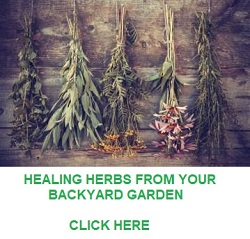Herbal Gardening - Common Herbs: Basil, Dill, Lavender
Three popular herbs, Basil, Dill, and Lavender can be useful and attractive.
Herbal gardening can be a useful and enjoyable hobby. Creating and tending your own herbal garden can be not only fun but practical. The aromas can be wonderful, the views beautiful, and many herbs can be used as medicines, for cooking, or simply for their beauty. Another plus about herbal gardening is that growing herbs is easy. They're typically hardy plants, thriving well in all kinds of soils. For optimal results, however, it's helpful to keep in mind a few basics about growing specific herbs.
Let's discuss a few:
BASIL
 Widely grown and greatly appreciated by herb gardeners, this popular culinary herb
loves warm soil and dry air. Basil is sensitive to cold, however, so be sure to wait until spring is well along and the nighttime frosts which could damage the plant are over. Widely grown and greatly appreciated by herb gardeners, this popular culinary herb
loves warm soil and dry air. Basil is sensitive to cold, however, so be sure to wait until spring is well along and the nighttime frosts which could damage the plant are over.
In about six weeks, you can harvest the leaves of basil and dry them for
use in casseroles, bread and a wide variety of other recipes. By
mid-summer you'll see white flowers on 1-2 foot stalks and the plants
will have profuse dark green or purple leaves. Separate them about a
foot apart and this delightful herb will make for an excellent addition to your garden.
DILL
Another popular culinary herb, Dill is a great herb for recipes, and very easy to
grow. Ultimately reaching 2-4 feet in height, it will produce blue-green
feathery leaves with small clusters of yellow flowers. It loves a lot
of full sun and the seeds don't require much care at all. Just toss a
few dozen dill seeds out into a small patch of the garden and watch
them grow!
You might need to thin them out a bit in a few weeks. When they've reached a couple of inches in height, you want to make sure the growing
plants are separated by 8-10 inches (20-25 cm), so each will get its full share of soil nutrients and sunlight.
Collect the flower heads in full bloom and use them for decoration or dry
them for use in cooking. Or, a couple of weeks after the dill
has flowered, you can harvest seeds. Cut the flowers and hang them upside down over
paper and collect the seeds as they fall. Then crumble the leaves.
Great for chip dips, salads, and many other delicious fresh foods.
LAVENDER
Beautiful, fragrant and great ground cover for an herb or flower
garden, these perennials are easy to grow and are a must in any herb garden.
Purple or pink flowers appear on tall stems in mid-summer, surrounded by gray-green
leaves. One of the aromatic
herbs, they smell lovely, making them a perfect addition to potpourri.
Growing
Lavender from seeds requires a bit more work, so pick up
some from your local gardening supply as full plants or root stem cuttings. They
love sun and dry, alkaline soil with good drainage. Once established,
they will fade in winter, but come back strong year after year.
You can pick the small flowers and use them to decorate a vase with them or add them to a sachet.
Either way you'll get a lot of enjoyment out of these delightful and easy-to-care-for herbs.
Herbology Course

Herbal Gardening
Herb List
|
You will find what you are looking for about herbal gardening here

|